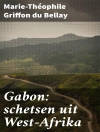In ‘The Highlands of Ethiopia, ‘ William Cornwallis Sir Harris presents a captivating exploration of Ethiopia’s mountainous landscapes, delving into the rich tapestry of its culture, geography, and history. Written in the early 19th century, the book melds vivid descriptions with scientific observation, revealing the rugged beauty of the region while providing insights into the sociopolitical dynamics and the local populace. Harris’s literary style is characterized by an acute attention to detail, employing a narrative that oscillates between travelogue and ethnographic study, thereby situating his work within the broader context of colonial exploration literature of his era. William Cornwallis Sir Harris was not only an astute observer but also a man of significant experience, having served as the British consul in Ethiopia. His background and extensive travels throughout Africa undoubtedly shaped his perspectives and fueled his passion for documenting the intricate relationships between environment, culture, and identity. As a contemporary of explorers such as Richard Burton and John Hanning Speke, Harris was compelled to contribute to the burgeoning interest in the African continent, all while navigating the complexities of imperial ambition. I recommend ‘The Highlands of Ethiopia’ to readers who seek to understand the convergence of adventure, ethnography, and history in one of Africa’s most enigmatic regions. Harris’s work not only enriches the canon of travel literature but also offers a rare glimpse into the lives and landscapes of Ethiopia, making it an indispensable resource for historians, geographers, and literary enthusiasts alike.
Sobre el autor
Sir William Cornwallis Harris (1807–1848) was a distinguished British military engineer, artist, and an early pioneer in the exploration of Africa, known for his vivid writings and contributions to the understanding of East African topography and wildlife. In ‘The Highlands of Ethiopia’ (1844), Harris documented his perilous journey through the terrain of present-day Ethiopia, shedding light on the culture, fauna, and geography of a largely unknown region to the Western world. His narrative exemplifies a tradition of travel literature, offering a window into the colonial mindset and spirit of adventure that characterized the Victorian Era. Harris’s style often combined detailed observation with personal reflection, exemplifying the empirical interests of his time while also engaging in the suspense of exploration. His books are considered seminal works in the corpus of 19th-century African exploration literature and remain valuable to historians and geographers interested in the period’s perspectives on Africa. Despite the influence of his era’s biases, Harris’s contributions laid foundational stepping stones to the study of Africa from a Western standpoint, and his legacy persists in historiographies addressing the exploration and cartography of the African continent.












